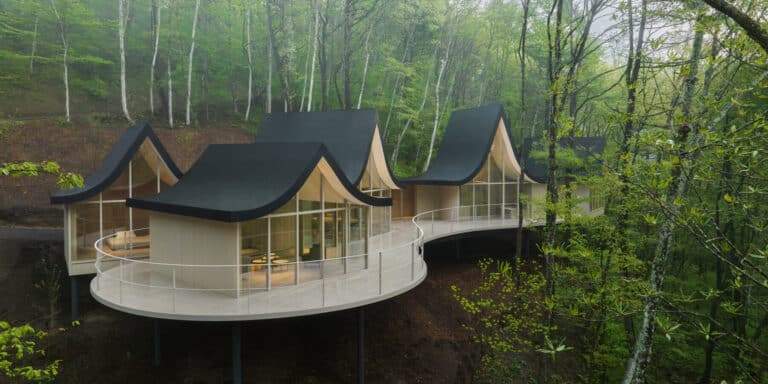Gio Ponti’s Philosophy of Architecture: The Timeless Design of Milan’s Pirelli Tower
Milan’s Pirelli Tower (Il Pirellone), designed by Gio Ponti and Pier Luigi Nervi, stands as a masterpiece of modernist architecture. Though controversial when completed in 1960, it has since become an icon of Italian design and a symbol of post-war innovation.
But beyond its striking façade, the Pirelli Tower embodies Ponti’s philosophy of architecture—a belief that a building’s artistic value transcends its function, materials, or era. In a 1956 essay for Architectural Record, Ponti argued that true architecture must be judged on eternal, moral, and aesthetic principles, not just technical achievements.
1. The Pirelli Tower: A Modernist Landmark
A Controversial Yet Revolutionary Design
When the Pirelli Tower was built, it broke conventions:
- Slender, tapered form (unlike blocky American skyscrapers)
- Innovative use of reinforced concrete (engineered by Pier Luigi Nervi)
- Minimalist façade with no decorative excess
Critics initially dismissed it as too radical, but today, it’s considered a pioneer of high-rise elegance.
Why the Pirelli Tower Still Matters
- Symbol of Milan’s post-war rebirth
- Influenced later skyscrapers (e.g., the Torre Velasca, also in Milan)
- Balances engineering and artistry—exactly what Ponti championed
2. Gio Ponti’s Philosophy: Architecture as Eternal Art
In his 1956 essay, “Out of a Philosophy of Architecture,” Ponti argued that great buildings must be judged by universal artistic principles, not just function or innovation.
Key Principles of Ponti’s Philosophy
1. Formal and Structural Inventiveness
- A building must have a unique, coherent form (not just repetitive elements).
- Example: Fallingwater (Frank Lloyd Wright) vs. generic office blocks.
2. Essentiality
- “Nothing can be added or taken away”—the design must be perfectly distilled.
- Example: The Pantheon’s geometric purity.
3. Representativeness
- A building should visually express its purpose (a church should look like a church).
- Example: Le Corbusier’s Ronchamp Chapel vs. neoclassical banks masquerading as temples.
4. Expressiveness
- Architecture must communicate meaning through form (not just function).
- Example: The Pirelli Tower’s soaring silhouette conveys lightness and modernity.
5. Illusiveness
- Great architecture transcends reality—it should feel poetic, almost unreal.
- Example: The Ca’ d’Oro in Venice—massive yet floating.
6. Perpetuity
- True architecture is timeless (unlike technology, which becomes obsolete).
- Example: Ancient Roman ruins still move us, while old factories decay.
3. Ponti vs. Modern Architecture: A Clash of Ideals?
Is Today’s Architecture Losing Its Soul?
Ponti warned against “architecture after architecture”—designs that imitate past styles without true creativity.
Modern risks:
- Glass-box skyscrapers with no expressive form
- Prefabricated buildings that lack uniqueness
- “Starchitect” vanity projects prioritizing spectacle over essence
Architects Who Embody Ponti’s Vision Today
- Tadao Ando (essentiality, light, and concrete)
- Zaha Hadid (fluid, expressive forms)
- Norman Foster (engineering + artistry, like the Gherkin)
4. Lessons for Future Architects
How to Design Timeless Buildings
✔ Prioritize form and meaning over trends
✔ Use technology, but don’t let it dictate aesthetics
✔ Ensure the building “sings” (as Le Corbusier said)
The Pirelli Tower’s Enduring Lesson
Ponti proved that even a corporate skyscraper can be art—if designed with philosophical depth.
Why Ponti’s Ideas Still Resonate
The Pirelli Tower wasn’t just a feat of engineering—it was a manifesto in glass and concrete. Ponti’s belief that architecture must be judged as art, not just utility, challenges today’s builders to think beyond efficiency and profit.
As cities fill with generic towers, his philosophy reminds us:
“The work of art is permanent—’perpetual’ as Palladio says. Let us preserve it!”







